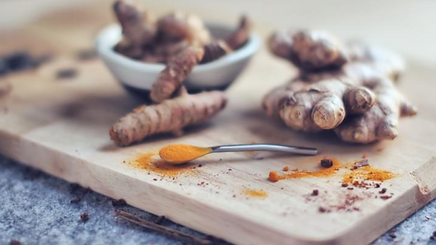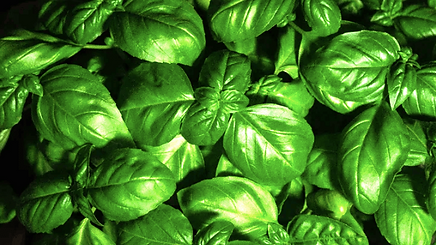Sources on Medicine in the Malay World
What is considered the Malay World?
The Malay World is a term referring to a socio-politico-cultural space within Southeast Asia. This space is non-specific and not clearly defined as there are multiple interpretations of what constitutes ‘Malayness’. Broadly speaking, however, the Malay World includes territories, nation-states, and communities where there is strong Malay cultural influence especially manifested in the use of the Malay language. Countries commonly considered to be part of the Malay World are Malaysia, Indonesia, Singapore, and Brunei. That said, the term is not limited to fixed geography as it includes societies that have strong historical links to the culture such as the Philippines, Sri Lanka, Thailand, and Timor-Leste. ‘Culture’ can be vague and all-encompassing at the same time, but the presence of ‘Malayness’ hinged onto various factors which could be seen and felt through the livelihoods and daily practices of local communities.
One of such daily practices was the treatment of illnesses through the administration and application of traditional medicine. Traditional Malay medicine takes on a holistic approach to healing by integrating pharmacological principles, syncretic religious beliefs, and even magical and supernatural practices. According to Norrudin, traditional practitioners or “medicine men”, locally known as bomoh gather knowledge of Malay ubat-ubatan (medicine) either through ilmu turun (Malay: inherited knowledge) or ilmu tuntut (apprenticeship). This was sometimes accompanied by a manuscript called the Kitab Tibb (book of medicine).

Portrait of a Malay medical man in Singapore in the early 1900s.
Lim Kheng Chye Collection, courtesy of National Archives of Singapore.
Examples of more commonly known herbs and their uses
Information is adapted from 100 Uses Herbs of Malaysia and Singapore: An Introduction to their Medicinal, Culinary, Aromatic and Cosmetic Uses by Joseph Samy, M. Sugumaran, Kate L.W. Lee, ed. K. M. Wong
Asam jawa 'Tamarind'
Medicinal ○ Vegetable ○ Flavouring ○ Fragrance
The young leaves are eaten as ulam or traditional salad served with sambal. Decoction of the leaves is used to treat fever whereas a poultice of young leaves is used to treat rheumatism. When mixed with turmeric, the paste is gently applied to boils, sores, and wounds.

Halia 'Ginger'
Medicinal ○ Vegetable ○ Flavouring
The young is sliced and eaten raw with ulam whereas the more mature rhizome is widely used in cooking as flavouring. The leaves are eaten, believed to treat stomachaches, rheumatism, and headaches. Medicinal recipes that incorporate ginger can also help alleviate menstrual cramps, flatulence, colic, dyspepsia, colds, coughs, fever, and nausea.

Selasih 'Sweet basil'
Medicinal ○ Vegetable ○ Flavouring ○ Fragrance
The young shoots are dipped in sambal as ulam. It is also commonly used as a condiment for cooking; its young leaves garnished on top due to their aromatic flavour. Its leaves and flowers are used to relieve coughs, cold, and bronchitis. Women with amenorrhea or post-childbirth, consume a decoction of its leaves to better regulate their menstrual cycle. In Vietnam specifically, the decoction is used to treat fever and malaria.

Serai makan 'Lemon grass'
Medicinal ○ Fragrance ○ Flavouring
Lemon grass is a centuries-old medicinal herb used to treat fever. Its essential oil seasons food, added in perfumes, as well as used in aromatherapy. In traditional medicine, it is applied as an ointment for rheumatism, sprains, muscle aches, and pains. The leaves and roots are boiled in water, drunk to treat urinary problems, stomachaches, and flatulence. The stem, with its strong fragrance, is also commonly used as a culinary herb in Southeast Asia.


Malay Manuscripts
A large portion of our repository of Malay sources are these written manuscripts. The kitab tibb is named after Ibn Sina (Avicenna)'s well-respected and venerable al-Qanun fi al-Tibb (Canon of Medicine). Most of these manuscripts were published circa the 19th to 20th centuries by notable peoples spanning throughout Southeast Asia.
The Malay manuscripts are originally handwritten in the Jawi script, the writing system of the language then. They primarily discuss the treatment of a wide variety of diseases using a mixture of plant materials, sometimes alongside herbs and spices, what we would contemporarily refer to as traditional Malay medicine. The old documents arguably reflect modern practices of phytotherapy and herbalism providing recipes meant to cure diseases like fevers, constipation, skin disorders, and amenorrhea. Aside from physiological conditions, mental and psychological illnesses like anxiety and postpartum depression are often mentioned as well. More peculiar non-medical issues included in the manuscripts like improving one's libido and pacifying a crying child are discussed quite extensively as well.
This divergence from modern biomedicine is largely due to fact that the human body in traditional Malay medicine is believed to constitute the four elements: fire, earth, water, and air. The ‘soul’ or spiritual and emotional state of a person is emphasized and determines how susceptible one is to various illnesses. Hence, in terms of diagnosis, problems that elicit negative or less desirable emotional responses are considered to be something to be resolved or ‘cured’ from. Unsurprisingly, religion and divination are also heavily incorporated in some of the manuscripts as steps to recovery. Verses of the Holy Qur’an are used as incantations in azimat, charm-like objects believed to act as protection and ward off evil and bad luck, reflecting how Islamisation of daily practices had taken root in the region.
The raw manuscripts are archived in various overseas institutions, some of which are made readily available for open public access due to digitization efforts. The trawl of such documents means the need to narrow down our list of sources by focusing and selecting Malay manuscripts with information most relevant to the project's objectives. We do this by verifying their availability for digitization, analyzing their origin (location and date first published), and the types of diseases discussed (physiological, psychological, non-medicinal, etc.). We ensure that the selected manuscripts span across various parts of Southeast Asia. As these manuscripts are written in Jawi, the process of transliteration and transcription to Romanised Malay (Rumi) is a necessary step before the extraction of data.
Efforts to transliterate old Malay medicinal manuscripts have also been made by several publishing houses in Malaysia such as the government body Forest Research Institute of Malaysia (FRIM), Akademi Jawi Malaysia, and Baytul Hikma. These publications are also included in our research, in conjunction with the digitized manuscripts to get a comprehensive picture and more thorough investigation of traditional Malay medicinal practice integral to the project.
Select Bibliography of Malay Medical Texts
Primary Sources
Published Books
Abdullah, H. (2017). Kitab Perubatan Melayu: Khazinat al-Insan [The Human Treasury], Haji Muhammad Ali bin Haji Muhammad Rawi. Kuala Lumpur: Akademi Jawi Malaysia.
Ahmad, A. S. (1982). Warisan Perubatan Melayu [Malay Medical Heritage]. Dewan Bahasa dan Pustaka Kementerian Pelajaran Malaysia.
Hussain, A. G. (2015). MSS 2999 Kitab Tib: A Modern Medical Insight into and Interpretation of a Malay Medical Manuscript. Kuala Lumpur: Forest Research Institute Malaysia (FRIM).
Karim, A. R. A. (2006). Analisis Bahasa dalam Kitab Tib Pontianak. Dewan Bahasa dan Pustaka.
Piah, H. M. (2006). Kitab Tib: Ilmu Perubatan Melayu. Kuala Lumpur: Perpustakaan Negara Malaysia.
Piah, H. M. (2017). Kitab Tib Muzium Terengganu: Edisi dan Huraian Teks. Kuala Lumpur: FRIM.
Piah, H. M., & Zawiyah, B. (2014). Kitab Tib MSS 2515 Perpustakaan Negara Malaysia: Kajian Teks dan Suntingan. Bangi: Universiti Kebangsaan Malaysia.
Shafri, M. A. M., & Hermansyah, M. H. (2017). Kitab Perubatan Melayu: al-Rahmah fi al-Tibb wa al-Hikmah [The Book of Mercy Concerned with Medicine and Wisdom], ‘Abbas Kuta Karang Aceh Dar al-Salam. Kuala Lumpur: Akademi Jawi Malaysia.
Shafri, M. A. M. (2018). Kitab Perubatan Melayu: Rumah Ubat di Pulau Penyengat [House of Medicine at Penyengat Island], Raja Haji Ahmad ibni Raja Hasan al-Haj. Kuala Lumpur: Akademi Jawi Malaysia.a
Shafri, M. A. M. (2018). Kitab Perubatan Melayu: Tayyib al-Insan fi Tibb al-Insan [The Goodness of Man is in the Medicine of Man], Wan Ahmad ibn Wan Muhammad Zayn al-Fatani, 2nd edition, Kuala Lumpur: Akademi Jawi Malaysia.
Shafri, M. A. M. (2019). Sari Segala Ubat Tabib Diraja Kesultanan Pontianak. Kuala Lumpur: Akademi Jawi Malaysia.
Sobree, N. (2017). Bustanus Salatin, Bab Ketujuh Fasal Ketiga: Pada Menyatakan Ilmu Tashrih dan Ilmu Tibb, Nurrudin ar-Raniri. Kuala Lumpur: Baytul Hikma.
Published Books
Leiden University
Cik Dul of Pulau Pinang. (1889). [Collection of Texts in Malay (I-III): Kitab Fa’al (here Called Kitab Obat); and Other Texts]. Or. 7650.
Muhammad, & Marhum Makota Alam of Aceh. (n.d.). [Collective Volume (Kitab Tibb) with Medical Texts in Malay: Prescriptions against Colds; and Other Texts]. Or. 1769.
Muhammad Joenoes. (1892). Kitab Tib. Or. 17.987.
Muhammad Saleh. (1840). Kitab Obat-obatan. Or. 3198.
Ronkel, P. (n.d.). Kitab Tib. Or. 5650.
Snouck Hurgronje, C. (n.d.). Kitab Tib: A Collection of Do’a, Azimat, Obat, Etc. Or. 7629.
Universiti Malaya
Kitab Ilmu Perubatan. MS 47.